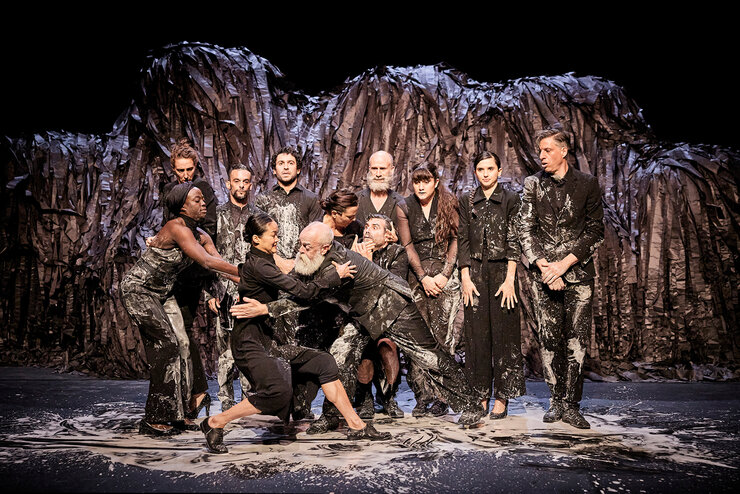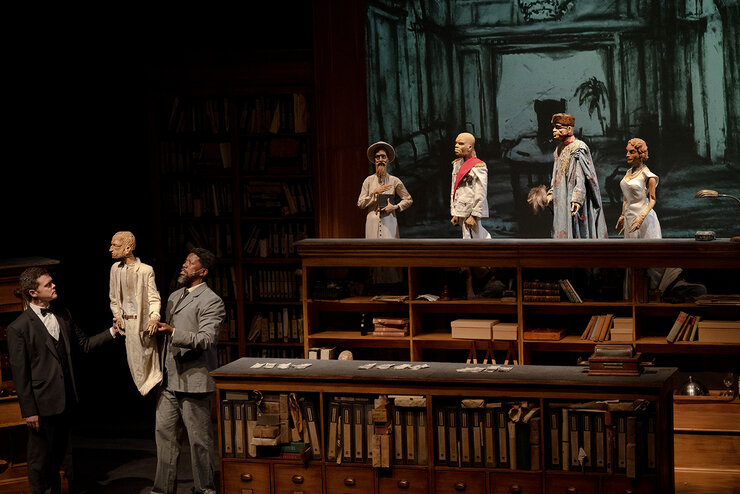Dear Audience
The situation is serious, yet there is hope. This impression remained with us throughout our encounters with international artists in the lead-up to the festival. For years, the Zürcher Theater Spektakel has showcased art from around the world, offering perspectives on inequality and injustice that are not part of our everyday awareness – yet are deeply woven into historical and contemporary entanglements, as many of the productions reveal. In part, the new urgency of the situation can be seen in the fact that autocratic developments are no longer isolated incidents, but rather a global trend – even here in Europe.
But there is also hope, born from the wonderful work of many superb artists. Not only when they tell hopeful stories, as many do, but also when they address a troubling world alongside fragile biographies and delicate moments. Yet, there are many instances of resistance to the harshness of the world. Hope always lies in people’s ability to observe with precision, compassion, and care. This capacity holds power, especially in moments of encountering you, the audience: witnessing lived experiences and stories together carries a societal potential for change and justice. And it wouldn’t be theatre if it didn’t also often involve beauty, joy, and humour.

You can see this empathetic gaze on the world, with its beauty and absurdity, exemplified in the works of our opening weekend. In their grand and poetic work «Qui Som?», the French-Catalan company Baro d’evel asks who we are and how we ended up where we are – a humorous yet unflinching look at the contradictions of human existence. Philippe Quesne presents a wonderfully quirky band of scarecrows singing about nature. As funny and charming as they are, they are also the last survivors of ecological disasters, a theme that Brazilian theatre maker Gabriela Carneira da Cunha also explores. Some stories are revisited, such as the depiction of fast fashion in «Wasted Land» by Ntando Cele. Others areless visible, like the system of modern-day slavery, told through music and dance by Lebanese women in Ali Chahrour’s «When I Saw the Sea». What all these works have in common is that they are stories about people – people we encounter on stage and in the moment, connect with their fates.
This is the power of art and theatre that transcends our daily media routine: In times when it is necessary to address issues and maintain a will- ingness to engage in conversation, art can achieve what discussions alone often cannot. Many productions at this festival celebrate our ability to foster empathy. Zurich-based choreographer Lea Moro explores intergenerational connection through touch, the German radio artists LIGNA invite children to participate in a «radio ballet» that builds bridges, and Brazilian theatre maker Jessica Teixeira boldly challenges the audience’s gaze upon supposedly «other» bodies. Belgian artist Miet Warlop, who mesmerised us two years ago on the Seebühne with acaptivating fusion of sport and music, now immerses her performers in 3500 metres of silk fabric. What unites those artists is their gift to surprise, entertain, and draw us into their world.
This year, we have invited a remarkable artist with several projects to offer a glimpse into hermultifaceted body of work. Dorothée Munyaneza was born in Rwanda, grew up in the United Kingdom, and now lives in France. Drawing on this rich and varied background, she is not only a dancer and choreographer but also a singer and musician, showcasing her talent in many different forms at the festival.

For the first time, the stage of the Talking on Water discourse series does not belong to voices from the Global South. With the German political scientist Maja Göpel, we have invited a scientist who questions the structures of Western societies. The French economist Ester Duflo has not only won the Nobel Prize for her research on poverty, but has also written economics books for children. She will be speaking in Zurich about the connection between inequality and climate change. Turning our attention to our continent is not a shift away from the global issues and structures discussed in this lecture series so far, but rather a focus on the interconnectedness and interdependence of these developments. In this year’s essay, American theorist Nancy Fraser emphasises that ecological issues, central to many productions at this festival, cannot be viewed in isolation from questions of economy, power, and representation.

Many works at this festival engage with fundamental questions of freedom, exploring the right to self-determination over one’s life and body in various ways – at a time when the freedoms of the press, art, and science are increasingly under threat in many countries. A festival of international artists is always a powerful moment of connection and liberty. We look forward to 18 days of diverse international art on the Landiwiese, a vibrant celebration of empathy, sensuality, humour, encounter, and freedom.
PS: Yes, this festival features incredible projects by international stars such as Boris Charmatz, William Kentridge, Laurie Anderson... and vampires. We almost let them slip through the cracks!
The festival direction
Matthias von Hartz, Sarah Wendle, Veit Kälin